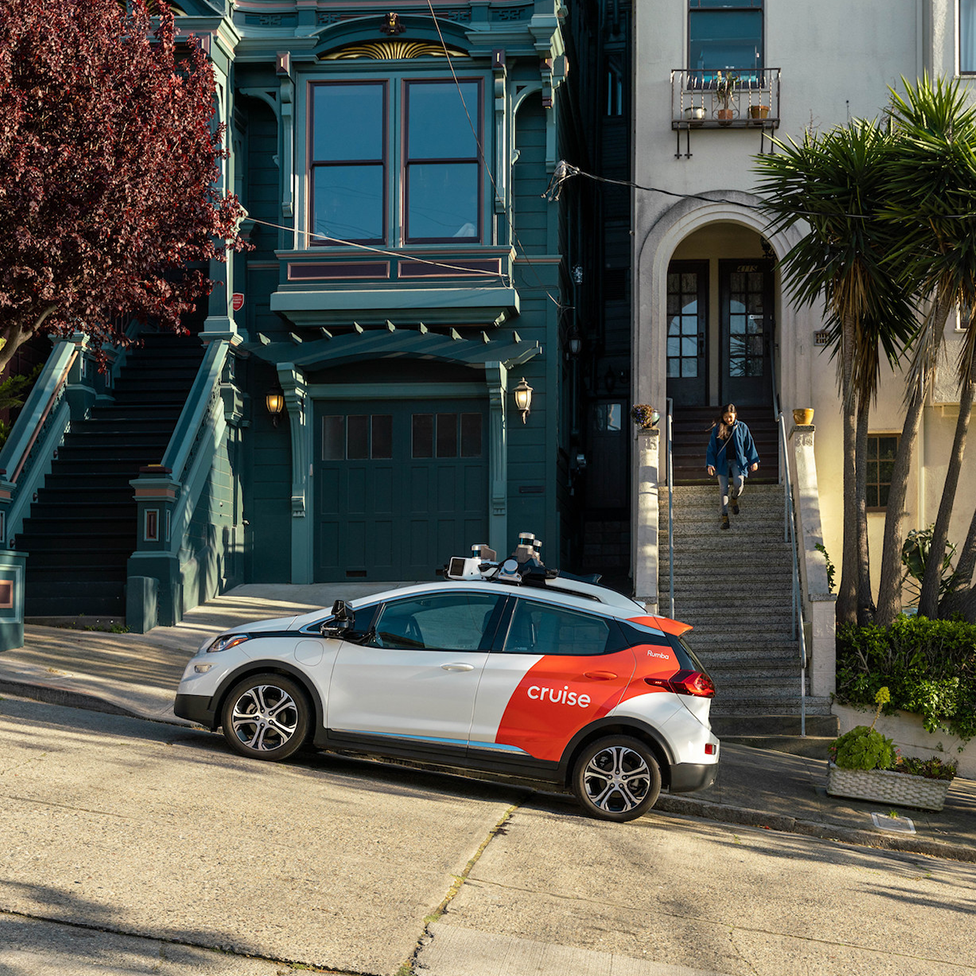The first truly driverless fleet offering ride-hailing service in a major city will hit the streets of San Francisco in just a few weeks. The city granted a permit to GM Cruise to operate their fleet of Chevy Bolt EVs without backup drivers, though within strict limitations:
The fleet can only operate between 10 p.m. and 6 a.m., can’t use highways or travel faster than 30 miles per hour, and will be restricted from downtown areas and from driving in fog, smoke (from wildfires), hail sleet, heavy rain or snow.
Despite those limits, the program will provide the automotive industry a critical first look not just at the way driverless taxi services work in the real world, but also at how light-duty EVs perform in real-world fleet services.
Understanding real-world wear and tear
Cruise vehicles have traveled more than 3 million miles through San Francisco over the last several years. The now-commercial fleet will quickly amass mileage that should shed light on service needs for EVs launched into fleets.

This is a critical test for dealerships to understand how service volume may change as EVs become more prevalent. While single-owner EVs will accumulate mileage more slowly and need service less often, it’s unlikely that all current owners of internal combustion cars will switch over to own EVs.
Instead, fleet programs that provide consumers with incremental access to vehicles are likely to meet a lot of drivers’ needs. Even Ford CEO Jim Farley expects this to be an important element of how the EV market matures.
In an interview with SeekingAlpha, Farley recently said that EVs are too expensive for the average consumer, and the manufacturer’s goal shouldn’t be to bring build costs down, but instead to lower total ownership costs for buyers, likely by offering access “by the mile, by the week, by the day, by the weekend.”
The businesses best equipped to make these programs work are not units like GM Cruise or software companies like Uber and Lyft. It’s dealerships, who already have the facilities, personnel, software and experience needed to operate fleets successfully.
Watching the maintenance costs for GM Cruise’s fleet (where possible) will show other manufacturers and their retail networks how EVs handle high utilization and shared access, and how well revenue from commercial fleet operations offsets reduced service volumes by keeping the assets at the dealership.
Weighing demand, supply and access

Another key question that GM Cruise can answer: can a ride-hailing business make money?
The name-brand companies in the space, Uber and Lyft, have famously grown into giants while losing enormous amounts of money each year.
But GM likely doesn’t want to launch a program that can’t turn a profit. Taking drivers out of cars provides a major cost reduction, but how that affects ride pricing and program profitability remains to be seen.
What we’ll also see, in the meantime, is whether new entrants can win some of the ride-hailing market away from the existing giants. That has some bearing on the evolution of dealerships’ business, too.
First, consumer adoption of GM Cruise will point to an appetite for new mobility options. As detailed in this excellent article from Slate ride-hailing has been a boon to many elements of social life, but it also “quashed business models that might otherwise have thrived,” like car-sharing.
Now that prices are rising, flexible fleet offerings could return to fill that gap between car ownership and taxi services. Dealerships in and around San Francisco should watch for any info on GM Cruise’s ridership numbers as indications of demand for flexible fleet access.
As prices for ride-hailing services and interest rates continue to rise, Cruise may demonstrate that car-sharing models or other flexible fleet programs have a place in the transportation marketplace.
While the industry waits for early data out of San Francisco, one thing is certain: it’s a great time for dealerships to look at new ways to use their fleets. To learn more about consumer trends that suggest dealers have an opportunity to compete with commercial fleet programs, check out our analysis of a 2021 survey which found that today’s drivers increasingly view car ownership as unnecessary. It’s just the transportation they need.







